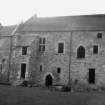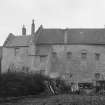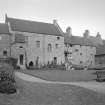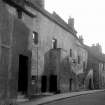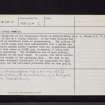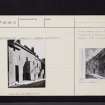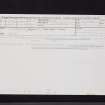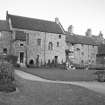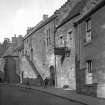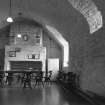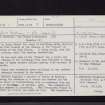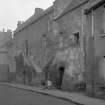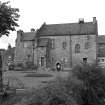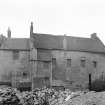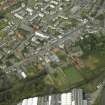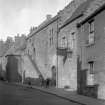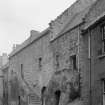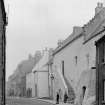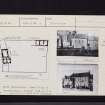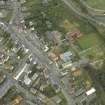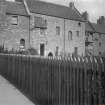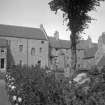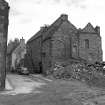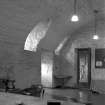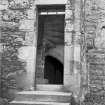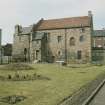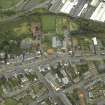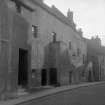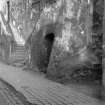Pricing Change
New pricing for orders of material from this site will come into place shortly. Charges for supply of digital images, digitisation on demand, prints and licensing will be altered.
Upcoming Maintenance
Please be advised that this website will undergo scheduled maintenance on the following dates:
Thursday, 9 January: 11:00 AM - 3:00 PM
Thursday, 23 January: 11:00 AM - 3:00 PM
Thursday, 30 January: 11:00 AM - 3:00 PM
During these times, some functionality such as image purchasing may be temporarily unavailable. We apologise for any inconvenience this may cause.
Inverkeithing, Queen Street, Friary And Museum
Friary (Medieval), Museum (20th Century), Unidentified Pottery (Medieval)
Site Name Inverkeithing, Queen Street, Friary And Museum
Classification Friary (Medieval), Museum (20th Century), Unidentified Pottery (Medieval)
Alternative Name(s) Franciscan Friary; The Palace
Canmore ID 50940
Site Number NT18SW 21
NGR NT 12949 82757
Datum OSGB36 - NGR
Permalink http://canmore.org.uk/site/50940
- Council Fife
- Parish Inverkeithing
- Former Region Fife
- Former District Dunfermline
- Former County Fife
NT18SW 21.00 12949 82757
NT18SW 21.01 129 827 Trial Excavation
(NT 1297 8274) Old Palace and Monastery (NR) (Remains of)
OS 6" map (1946)
In Queen Street the range of buildings being restored by the Town Council is the remains of the 'Palace' or hospitium of the Grey Friars. It dates mainly from the 14th century, with 17th century remodelling.
On the east side of the 'Palace' lay a court, the only remains of the buildings that once enclosed it being a range of three vaulted cellars (mainly 14th century) to the north. There were evidently other buildings in the orchard that extended eastward to the shore.
RCAHMS 1933; H Fleming
Brockie supplies a charter of Philip de Moubray, narrating his erection of a church and convent for the Friars Minor at Inverkeithing with an endowment from the lands of Barnbougle, 28 October, 1268. The authenticity of this charter is uncertain. This Franciscan Friary is mentioned in 1384/5, and again in 1559. The hospitium of the friary remains.
D E Easson 1957
The hospitium of the Franciscan Friars at Inverkeithing is now in use as a County Library: it has been restored and is in an excellent state of preservation. The cellars of the north range have been incorporated into a garden and pleasure ground scheme together with the foundations below soil here shown on RCAHMS plan which have been uncovered. The foundations are of more cellars, probably of the east range: in places, the walls survive to a height of the springing line. The well in the former courtyard (south-east of the hospitium) has been cleared and the well-head protected with an iron grille.
Visited by OS (AC) 11 March 1959
Field Visit (16 October 1930)
"The Palace" or Hospitium of the Grey Friars.
This building, on the east side of Queen Street has the appearance of a late 17th-century tenement but, on examination, its walls were found to represent part of the western range of the cloister buildings of the Grey Friars and to date mainly from the 14th century. The range had originally extended farther to the south, while at the opposite end it ran as far as the north gable of the house now standing on the north of "the Palace". What is left is three storeys in height and is L-shaped on plan, with the wing projecting eastward in alignment with the south gable. In the 17th century the main block was remodelled, while the western half of the wing from the first floor upwards was entirely rebuilt. To suit the rearrangement, two forestairs were added facing the street, while a newel-stair was built at the back within the re-entrant angle.
The newel-stair covers the inner end of a vaulted transe passing through the ground floor of the main block. Of the outer archway of the transe only the rear-arch remains, but the inner archway, with its rear-arch, is complete. The wing contains two vaulted cellars, both originally entered from the transe, but now from outside. Each cellar has a hatch in the ceiling. The east vault may be secondary.
Within the main block a long cellar, ceiled with a lofty, pointed barrel-vault occupies the space on the north side of the transe. It is entered directly from the street through a modern doorway. At the north-western corner there seems to have been a small newel-stair. The cellar has latterly been subdivided, and an entresol floor, approached by a wooden staircase, has been inserted within the southern division. Its north gable contains a wide, arched fireplace with a cupboard on each side. The windows and doors are comparatively modern.
The upper floors of the main block have been so extensively remodelled that the only feature of special interest now traceable is a built-up lancet window in the west wall at first-floor level. On the other hand, the upper floors of the wing, although partly rebuilt, have been less completely altered. At first-floor level the vaulted chamber at the east end is mainly original, but the windows are modern. It has a built-up fireplace in the east gable, while the north wall shows the top of the original door below. Above this chamber is another, which has been modernised.
On the east side of "the Palace" lay a court, the size of which is indeterminate, since of the buildings that enclosed it on the three other sides there remain but three vaulted cellars to the north, clearly part of the undercroft of a north range. These apartments are mainly of the 14th century, but have been to some extent reconstructed, since their vaults are badly adjusted to the back wall. The most easterly of them seems to have had a staircase passing through the haunch of the -vault at the south- eastern corner and a flue at the corner diagonally opposite, while there is a similar flue in the cellar adjoining.
The ground plan shows the area mainly occupied by the Friary, but there were evidently other buildings in the orchard that extended eastward to the shore. On the plan the remains of the original structures are coloured black, such parts as have been rebuilt being indicated by hatching or stippling.
HISTORICAL NOTE. This house can be determined to be that described in a charter of 1605 as "the hospitium of Inverkeithing with the gardens ... which formerly belonged to the Friars of the Order of St. Francis in Inverkeithing” (1). In 1384 the house of the Grey or Minorite Friars in Inverkeithing was made free of all secular burdens whatsoever (2). The contributor to the Statistical Account (1793) (3) refers to the fact that both Dominican* and Franciscan Friars had convents in the town, and continues: "There is a house called the Inns, which still has peculiar privileges and exemptions, not being within the jurisdiction of the magistrates, and appears to have been one of them, from its form, vaults, high garden walls, and other buildings." In the article on the parish in the New Statistical Account (1836) (4) it is stated that "An old tenement, named, the Inns' is said to have been the residence of Annabella Drummond, Queen of Robert III.... The house is exempted from burgh jurisdiction, though in the middle of the town." Mr. W. Moir Bryce writes that "there is good reason to believe that an ancient building known as the Palace now stands on the old friary demesne, if it does not enclose a part of its buildings, because the boundaries of the area occupied by the Palace, from the street on the north to the foreshore on the south, correspond in general terms to those contained in the old title deeds of the Friary” (5). It is clear, however, that in the "Palace" we have the actual hospitium of the Grey Friars. Part of the domestic buildings of the Black Friars at St. Andrews was known, while it still existed, as "the Palace” (6). A similar usage is noted in connection with the Priory at Pittenweem [NO50SW 5]. For other cases see Introd. p. lvii. The name of "Inns" for an hospitium also has parallel in St. Andrews [NO51NW 15]. From the name of a late 17th century proprietor the present building was known as "Rotmell's Inn." For the history of the ownership of the house and lands after the Reformation reference may be made to the History of Inverkeithing and Rosyth by the Rev. Wm. Stephen, pp. 302-7.
RCAHMS 1933, visited 16 October 1930.
(1) Reg. Mag. Sig., s.a .. No. 1626. (2) Exch. Rolls, iii, p. 127. (3) x, p. 511 note. (4 ) ix, p. 240. (5) The Scottish Grey Friars, i, pp. 248-9. (6) Hay Fleming, Handbook to St. Andrews, p. 13. Cf. also Introd., p. lvii.
Publication Account (1981)
The early history of the friary is unclear, and in 1559 Mark Flucar, 'guardian of the Cordeliar Friars' set two acres of land belonging to the monastery to John Swyntoune. This charter was signed 'at the ruins of the said place' showing that the buildings had been partially destroyed (Millar, 1895, ii, 190).. Out. of the 'ruins of the said place', is a remarkable survival in the form of •the hospitium of the friary. 'The. Palace' or hospitium is located on the east side of Queen Street has the appearance of a late seventeenth century tenement, 'but on examination its walls were found to represent part of the western range of the cloister buildings and to date mainly from the fourteenth century' (RCAM, 1933, 153). Three-storeys in height, the building has an L-shaped plan with its wing projecting eastward in alignment with the south gable (RCAM, 1933, 153). It was known as 'Rothmell's Inn' after a seventeenth century owner and until early this century was used as a dwelling house. In the 1930s the town council converted it into a community centre, and in 1974, the upper floor was opened as a town museum (Inverkeithing Past and Present, n.d. ,2).
Information from ‘Historic Inverkeithing: The Archaeological Implications of Development’ (1981).
Excavation (3 September 2018 - 14 September 2018)
NT 1297 8274 An archaeological excavation and community project 'Back in the Habit - Digging for Inverkeithing's Medieval Friary' was undertaken by Northlight Heritage, on behalf of Fife Coast and Countryside Trust and the Fife Pilgrim Way project, on the site of the former Franciscan Friary at Inverkeithing, Fife. The excavation was conducted between 3 and 14 September 2018, and four excavation trenches opened. Archaeological deposits were encountered in all four trenches, buried beneath significant volumes of topsoil overburden, probably imported to the site in the 1930's when the site was landscaped and turned into a park garden. Remains of the southern wall of what is likely to have been the northern range of the friary, possibly the friary church, were encountered along with deposits relating to the construction and demolition of the structure. Medieval pottery was recovered from deposits associated to the wall. A possible floor, comprised of sandstone flagstones, was also identified.
Archive: NRHE
Funder: Fife Coast and Countryside Trust and National Lottery Heritage Fund
Alastair Becket – Northlight Heritage
(Source: DES Vol 20)





































